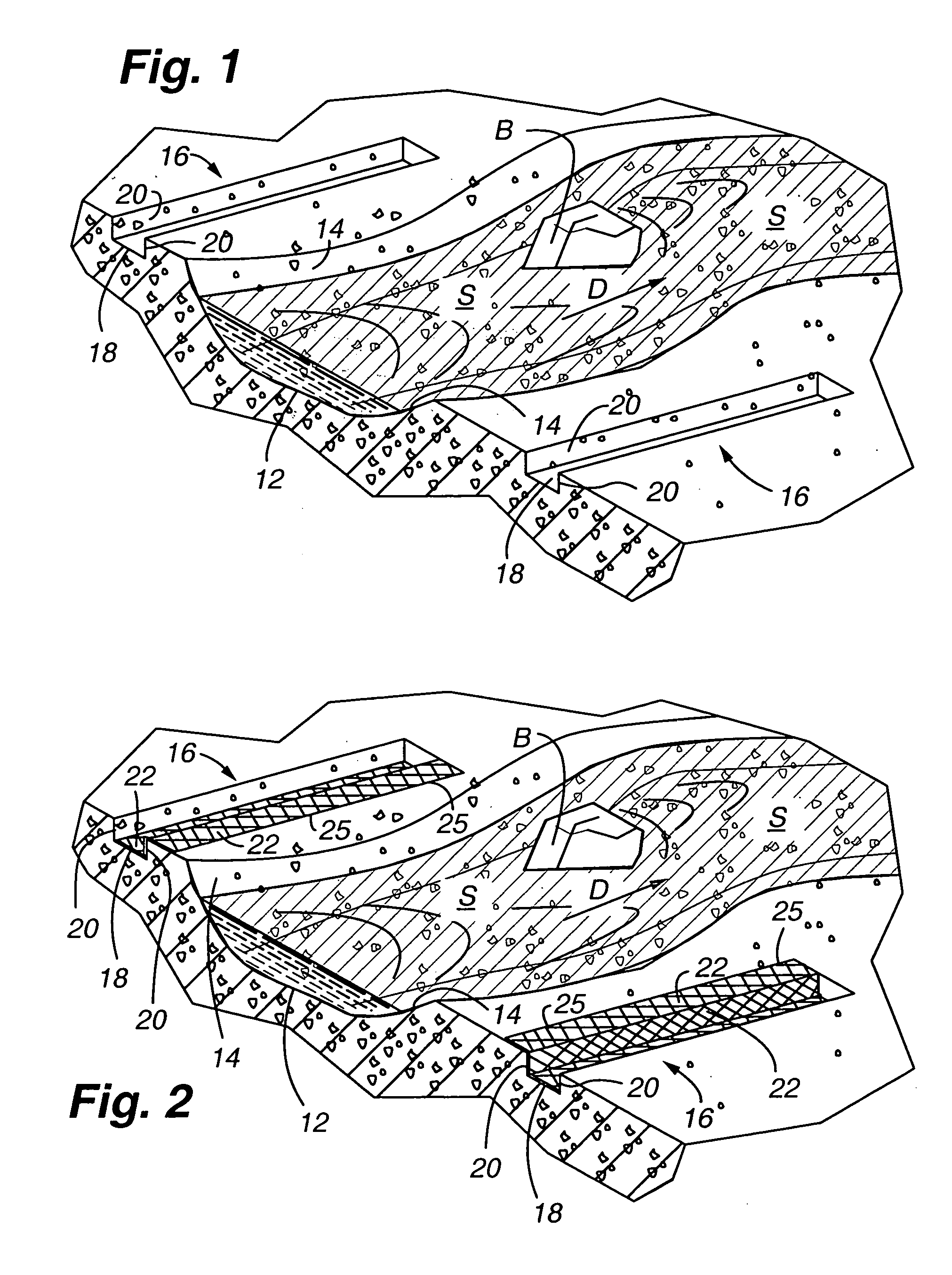Subsurface platforms for supporting bridge/culvert constructions
a technology for supporting bridges and culverts, applied in bridges, stream regulation, bridge structural details, etc., can solve the problems of difficult or impossible, infeasible, and difficult to place rip raps over extended lengths of rivers, and achieve cost-effective effects
- Summary
- Abstract
- Description
- Claims
- Application Information
AI Technical Summary
Benefits of technology
Problems solved by technology
Method used
Image
Examples
Embodiment Construction
[0018]FIG. 1 illustrates in cross-section a body of water such as a stream S which is flowing either upstream or downstream in a direction D. The stream is defined by a streambed 12, and banks 14 which rise above the level of the stream. The stream may have multiple other natural features such as boulders B, as well understood. Spaced laterally away from each of the banks 14 is an excavation 16 which generally extends in the same direction D as the stream. Preferably, an excavation is box-like which includes a flat bottom 18, and substantially perpendicular sidewalls 20. As mentioned above, a preferred maximum depth of an excavation is between about 3 to 6 feet, and the width can be variable depending upon design considerations in preventing scour from differing types of bodies of water. As shown in FIG. 2, a piece of sheet material 22 extending the length of each excavation 16 is placed to cover the bottoms 18, and the remaining widths of the sheet material 22 extend out from the ...
PUM
 Login to View More
Login to View More Abstract
Description
Claims
Application Information
 Login to View More
Login to View More - R&D
- Intellectual Property
- Life Sciences
- Materials
- Tech Scout
- Unparalleled Data Quality
- Higher Quality Content
- 60% Fewer Hallucinations
Browse by: Latest US Patents, China's latest patents, Technical Efficacy Thesaurus, Application Domain, Technology Topic, Popular Technical Reports.
© 2025 PatSnap. All rights reserved.Legal|Privacy policy|Modern Slavery Act Transparency Statement|Sitemap|About US| Contact US: help@patsnap.com



